In the vibrant archipelago of the Philippines, oyster farming emerges as a cornerstone of aquaculture practices. With its rich coastal resources, the country has fostered a thriving oyster cultivation industry. This comprehensive guide delves into the intricate realm of oyster farming, unraveling the techniques that underscore successful cultivation.
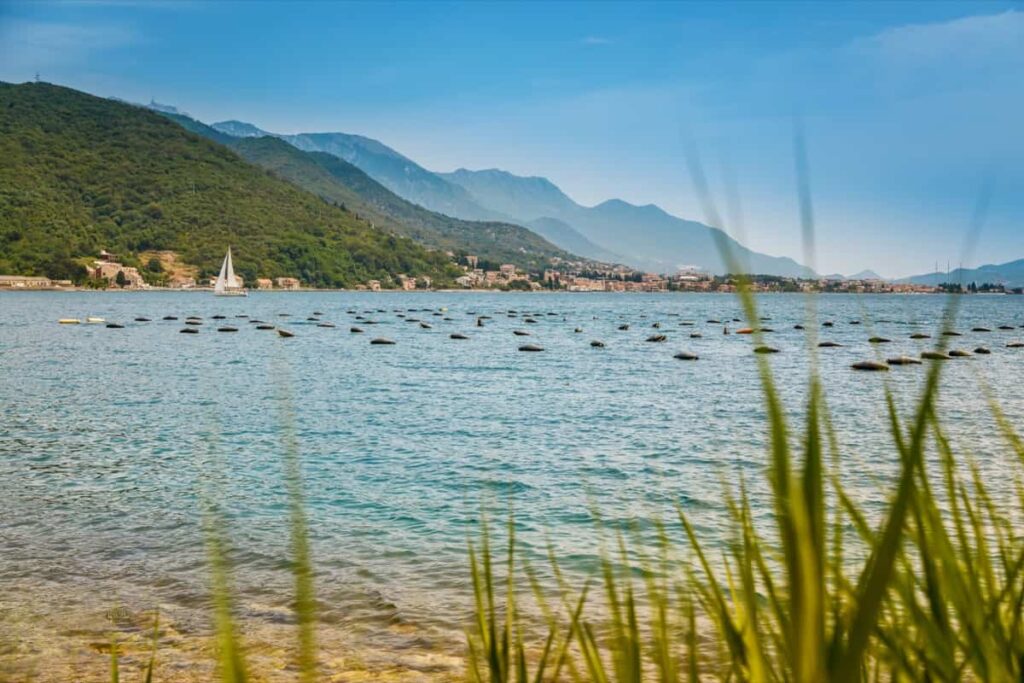
From hatchery to harvest, we explore the biological nuances, environmental considerations, and economic impacts that shape this practice. Embark on a journey through tides and techniques as we uncover the scientific tapestry that defines oyster farming in the Philippines.
Introduction to Oyster Farming in the Philippines: A Comprehensive Guide
Numerous prime oyster-farming locales await discovery within the picturesque expanse of the Philippine archipelago. The art of nurturing oysters took root in Bacoor Bay, nestled in the Cavite province, where a tapestry of small-scale family enterprises flourished. These oyster havens, spanning from 0.5 to 5 hectares, yield an average of 50 metric tons per hectare.
Enhanced by their strategic proximity to Metro Manila markets and efficient land-water transit, the marketing of oysters poses minimal challenges. As the current demand outpaces supply, the Philippines’ oyster industry stands poised for expansion, painting a portrait of opportunity on the aquatic canvas.
Understanding the Importance of Oyster Farming in the Philippines
Oyster farming in the Philippines holds profound significance, epitomized by the Magallana bilineata, also known as the Philippine cupped oyster or slipper oyster. This economically vital species thrives extensively in the western Pacific Ocean, from the Philippines to Fiji and Tonga. Notably, a distinct population was identified in northeastern Australia in 2020.
Flourishing in brackish shallow intertidal or subtidal waters up to 300 meters deep, these oysters serve as a substantial source of sustenance. Reverently dubbed “talaba” or “talabang tsinelas” in Filipino, they are cultivated prolifically, with annual harvests ranging from 11,700 to 18,300 tons.
Choosing the Right Location for Oyster Farming in the Philippines
Oyster farming in the Philippines revolves around its exquisite flavor and culinary appeal. This sought-after bivalve is predominantly marketed as freshly shucked meat, with salted oysters and bagoong crafted during peak harvests. Rich in vitamins, minerals, proteins, and carbohydrates, oysters boast multiple benefits. Their shells find purpose in lime and poultry grit production, serving as spat collectors. Mariculture has expanded, covering about five sq/km across 1,300 farms in 17 provinces.
In case you missed it: Tilapia Farming in the Philippines: A Comprehensive Guide
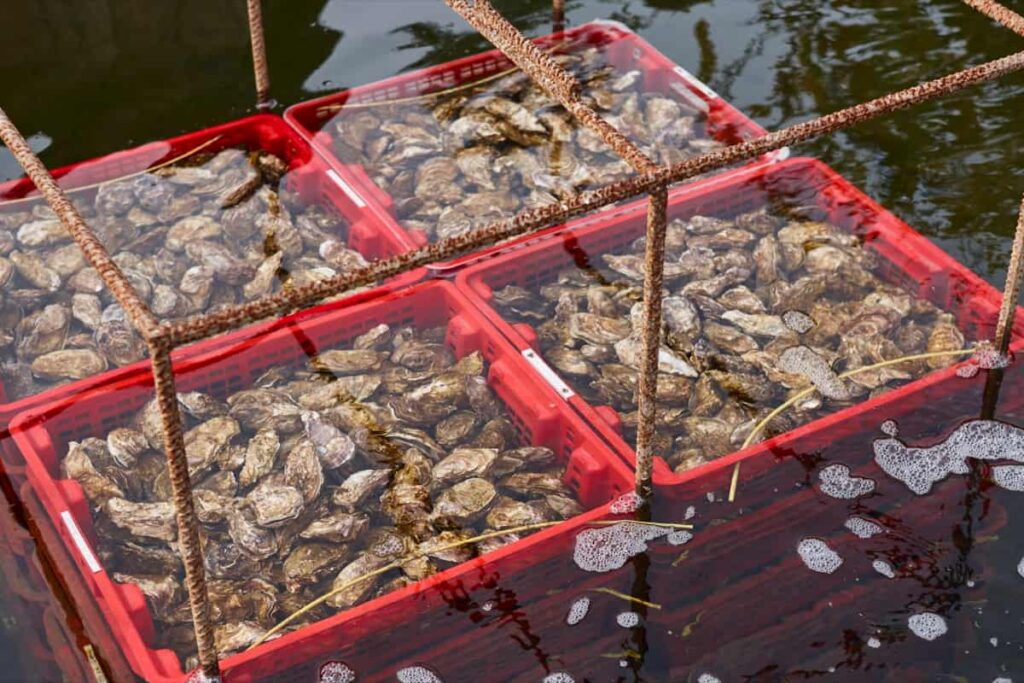
Major producers include Negros Occidental, Pangasinan, and Cavite. Oysters flourish in brackish, marine waters with specific salinity levels and temperatures. Proper site selection, protective conditions, and abundant substrates ensure successful cultivation. Four primary talaba species are cultivated, with Crassostrea iredalei and Saccostrea malabonensis recommended for growth. The spawning season, fertilization, and spat collection process contribute to the 6-10 month maturation period.
Essential Equipment and Infrastructure for Oyster Farming in the Philippines
Oyster farming in the Philippines relies on essential equipment and infrastructure for successful cultivation. Pivotal tools include spat collectors from empty oyster shells, providing attachment points for juvenile oysters. These collectors facilitate monthly growth until the oysters measure about 1.27 cm.
Protective structures against strong winds and waves in naturally sheltered areas like estuaries are crucial. Oyster farms require suitable substrates such as logs, stones, and shells. Proper water quality management is vital, necessitating monitoring equipment. Additionally, efficient transportation mechanisms within 100 km of markets are essential.
Oyster Species Suitable for Farming in the Philippines
Oyster cultivation in the Philippines encompasses four distinct species: Crassostrea iredalei, C. cucullata, C. malabonensis, and C. palmipes. Among this quartet, Crassostrea iredalei emerges as the coveted gem for commercial endeavors. Renowned for its swift growth and substantial size, it boasts straight shell margins that facilitate easy opening.
C. iredalei’s accelerated growth dynamics notably contribute to its preeminence in the market. With scientific precision, this selection is a testament to the careful curation of oyster species suitable for Philippine aquaculture, ensuring a harvest of both quality and efficiency.
Oyster Hatcheries and Seed Production Techniques in the Philippines
Oyster farming in the Philippines employs various cultural methods, with the hanging method being the recommended approach. In this technique, bamboo or wooden posts are installed, forming rows spaced at 4.0 meters horizontally and 1.0-1.5 meters vertically. Platforms made of bamboo poles are affixed to the posts, positioned around 0.50 meters below low tide level.
Empty oyster shells, threaded in clusters of 12-16 with 7.62-10.16 cm spacing, serve as spat collectors. Polyethylene ropes support these clusters, maintaining a 20.0-25.0 cm gap between them. Regular maintenance includes checking for damages, ensuring proper positioning of oysters below low tide, and removing obstructive sponges.
Oyster Hatcheries and Seed Production Techniques in the Philippines
Oyster hatcheries and seed production are pivotal in sustaining oyster farming in the Philippines. The hatchery process begins with collecting oyster spats, usually from existing populations. These spats are reared in controlled environments, facilitating optimal growth and survival. Salinity, temperature, and water quality are closely monitored during this phase.
In case you missed it: Milkfish Farming in the Philippines: A Comprehensive Guide
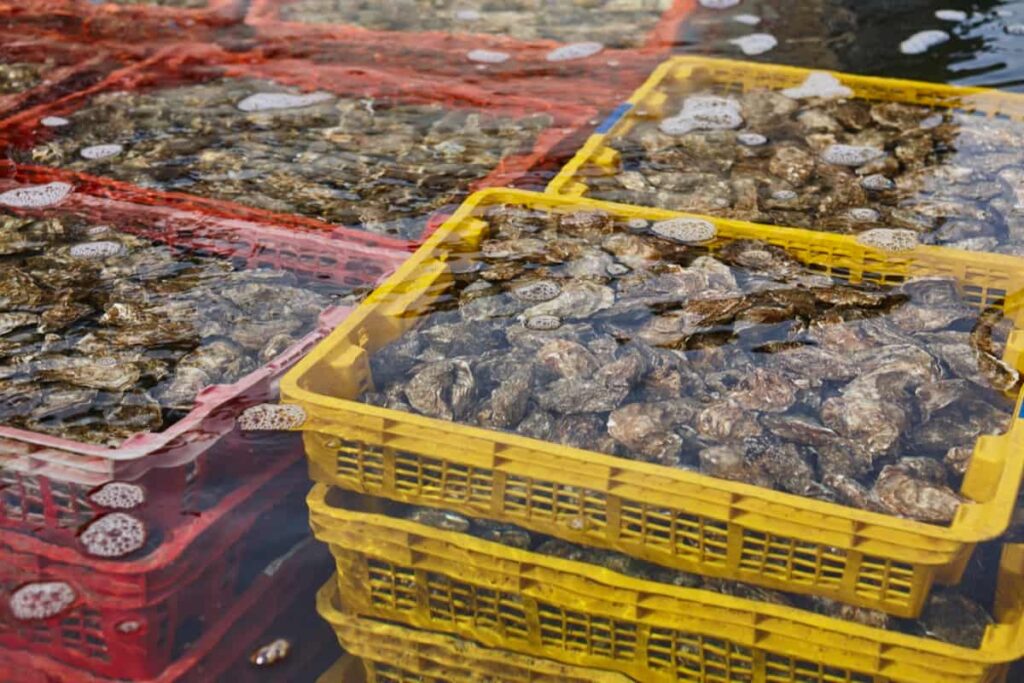
A temperature drop is typically initiated to stimulate spawning, mimicking natural conditions. Once fertilization occurs, the resulting larvae are nurtured through various stages, feeding on appropriate microalgae. As the larvae develop, they metamorphose into spat, which are then transferred to substrates like empty shells or other collectors.
Oyster Larvae Rearing and Nursery Management in the Philippines
Bacoor Bay’s oyster cultivation, two productive and cost-effective methods thrive the stake and hanging methods. The staking method capitalizes on mature bamboo trunks, their length dictated by water depth. Stakes are positioned at 1.0-meter intervals, extending above the low water mark by approximately half a meter.
Conversely, the hanging method embraces oyster shells strung along polyethylene ropes, their length tailored to water column height. Oyster shells are punctured at the center, allowing the rope to pass through, with 12 cm intervals maintained through knots. The construction of platforms for hanging collectors employs diverse bamboo sizes. A plot typically spans 1m x 20m, comprising bamboo trunks staked at meter intervals.
Additional bamboo series are placed parallel, linked by crosspieces, and crowned by horizontally nailed bamboo poles. Collectors are secured to oyster plots by tethering the rope’s end to the top horizontal bamboo poles. A 25-30 cm distance separates collectors, encapsulating an intricately orchestrated system that propels oyster farming’s success in Bacoor Bay.
Oyster Grow-out Systems and Techniques in the Philippines
- Seasonal Installation: Stakes and collectors are strategically placed in natural oyster spawning areas from May to August, coinciding with optimal environmental conditions marked by favorable salinity and temperature. This period aligns with the peak oyster spawning season in the country.
- Predator Control: Hand removal of predators like crabs, sea urchins, and oyster drills prevents their impact on oyster populations. Scraping off fouling organisms such as sponges, annelids, and barnacles with sharp knives mitigates yield reduction caused by overcrowding and hindered water flow.
- Vigilant Guarding: Oyster farms are meticulously guarded against poachers, particularly when oysters attain marketable size. This safeguards the farm’s integrity and prevents unauthorized harvesting.
- Cultivation Duration: The culture period spans 6-8 months, encompassing oysters’ growth from spat to marketable size under carefully managed conditions.
- Optimal Harvesting: March, April, and May mark the prime period for oyster harvesting, as the oysters are at their peak in terms of plumpness, fullness, and flavor.
- Harvesting Process: Divers undertake underwater harvesting, delicately prying oyster clusters from stakes using mallets or hard objects. The collected oysters are placed in bamboo baskets within rubber interiors to preserve their quality.
- Efficient Hanging Method: The hanging method streamlines harvesting, as collectors are cut off and hauled using boats, minimizing disruption to the farm’s infrastructure.
- Size Sorting: Oysters are sorted by size, segregating the marketable ones from the undersized. This meticulous process ensures the quality of the harvested oysters.
- Replenishment: Immature oysters are carefully managed, either by broadcasting them back into the bay, spreading them on the seabed, or placing them in suspended bamboo trays. This replenishment strategy fosters sustainable oyster populations.
In case you missed it: Mud Crab Farming in the Philippines: Evergreen Profitable Business
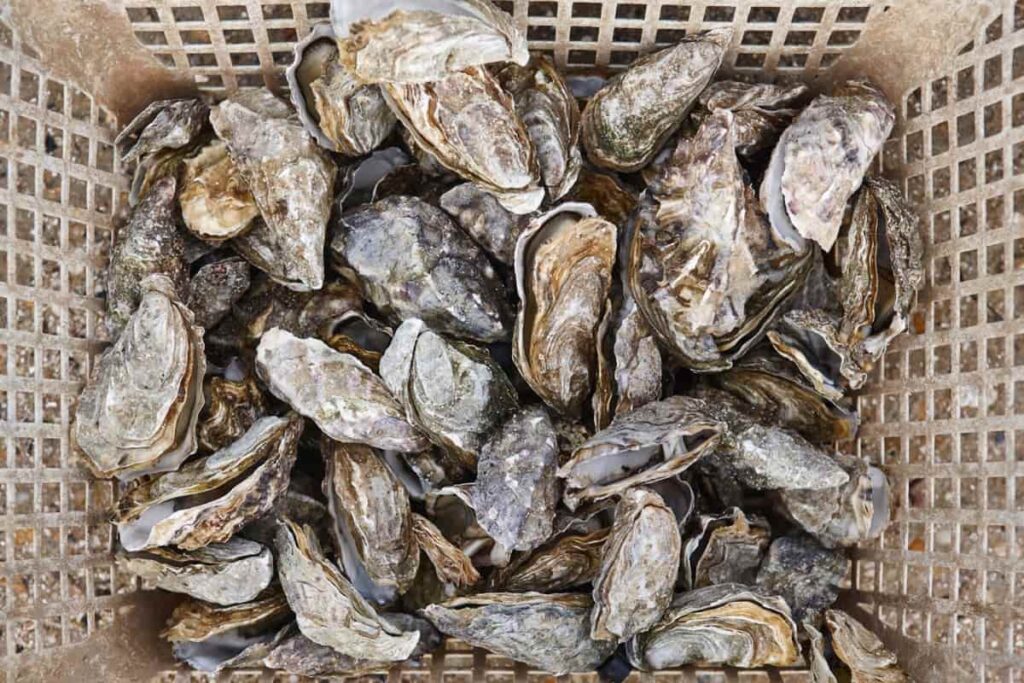
Water Quality Management for Successful Oyster Farming in the Philippines
- Salinity Control: Oysters thrive in specific salinity ranges (15-26 ppt), influencing growth rates and survival. Regular monitoring and adjusting salt levels maintain suitable conditions.
- Temperature Maintenance: Water temperatures (20-30°C) impact oyster metabolism and reproduction. Ensuring stable temperatures within this range fosters favorable growth and spawning.
- Pollution Prevention: Clean water free from pollutants sustains oysters’ health and quality. Preventing runoff, waste discharge, and chemical contamination safeguards their environment.
- Dissolved Oxygen Levels: Adequate oxygen availability is essential for oysters’ respiration and metabolism. Monitoring dissolved oxygen levels prevents suffocation and enhances growth.
- Algae and Phytoplankton: Oysters feed on microorganisms like phytoplankton. Maintaining proper nutrient levels and algal blooms fosters a sufficient food supply.
- Water Exchange: Regular water circulation prevents stagnation, ensuring oxygen supply and waste removal.
- pH Balance: Monitoring pH levels (7.5-8.5) prevents acidity that can harm oysters and disrupt their shell formation.
- Turbidity Control: Clear water aids feeding and growth. Managing turbidity by limiting sediment runoff supports optimal conditions.
Feeding and Nutrition Requirements for Oysters in the Philippines
Oysters in the Philippines require a balanced diet of microorganisms, mainly phytoplankton, for optimal growth and nutrition. Phytoplankton serves as their primary food source, providing essential nutrients. Water quality plays a crucial role in maintaining suitable levels of nutrients and promoting healthy phytoplankton populations. Adequate feeding and nutrition sustain oysters’ physiological functions and shell development, enhancing their quality.
Disease Prevention and Management in Oyster Farming in the Philippines
Oyster farming in the Philippines faces disease challenges, notably Dermo and MSX infections caused by protozoan parasites. Prevention involves monitoring water quality, particularly salinity and temperature, as these factors influence parasite growth. Proper handling and biosecurity practices, including cleaning equipment and avoiding cross-contamination, aid disease prevention.
Regular shell inspections and culling of infected individuals mitigate disease spread. Quarantine measures for introducing new oysters and promptly reporting disease outbreaks facilitate effective management.
Harvesting, Processing, and Marketing of Oysters in the Philippines
Harvesting: Regular site visits or on-site presence safeguards against poaching while clutch lines are pulled to harvest oysters. Larger oysters are separated for the market, while smaller ones are left in bottom bamboo trays for further growth. Harvested oyster shells are submerged and cleaned before being packed in gunny sacks, bamboo baskets, or “kaing,” each holding around 40 kg of fresh shell oysters.
In case you missed it: Mudfish Farming in the Philippines: How to Raise and Grow Dalag
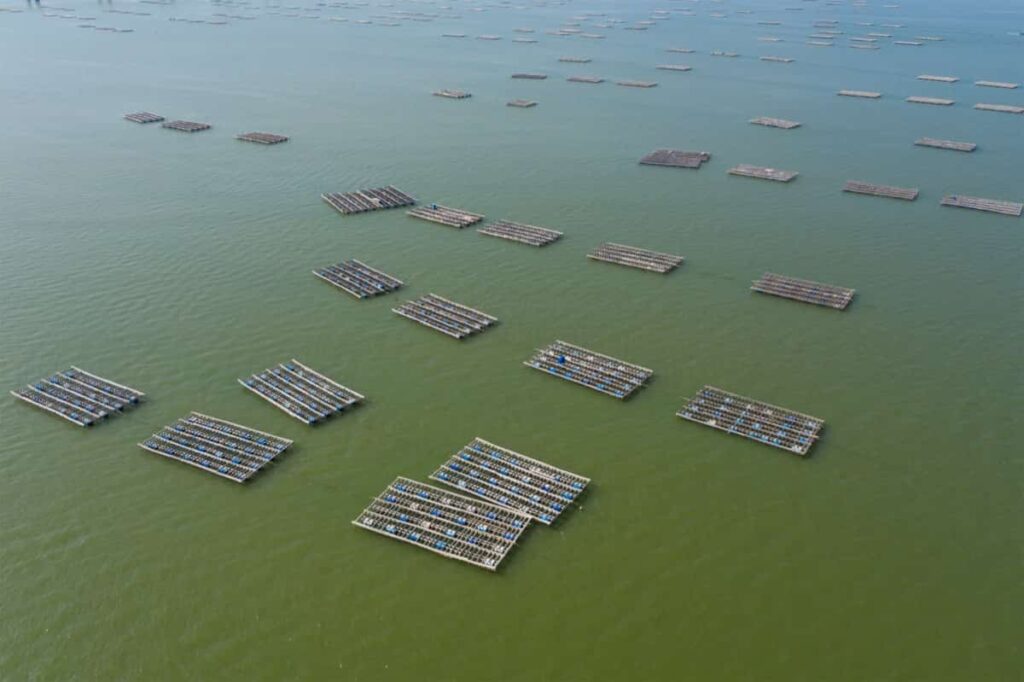
The marketable size ranges from 6.0 to 12.50 cm, and optimal harvesting occurs before the spatting season of March to May, when oysters are plump and delectable. Production can reach 8-12 metric tons per hectare, with a 2,500 sq m growing area ideal for beginners. Red tide occurrences prompt harvesting suspension until the area is safe.
Marketing: Oysters are sold either shell-on or shucked, with shucking involving sharp knives and placing the meat in clean water. Unshucked oysters are sold by the basket or kilogram, reflecting consumer preference. Demand for oysters remains high, especially during summer for outings and gatherings. Stormy weather affects supply due to harvesting difficulties. Local oyster supply struggles to meet demand, but concerns about meeting contract quantities for international trade exist among farm operators.
Economic Considerations and Profitability of Oyster Farming in the Philippines
Economic feasibility and innovation intertwine in the Philippines’ oyster farming landscape. Oysters, valued as low as P60–70 (US$1.20–US$1.40) for a serving of 10-15 shells in small seafood eateries, take an intriguing turn in high-end establishments where a dozen single, meticulously sorted oysters can command up to P500 (US$10). A transformative technique developed by Dr. Ma. Junemie Hazel Lebata-Ramos of SEAFDEC/AQD unveils the potential for individual oyster growth.
By cultivating oysters in bespoke pouches and trays, unclustered growth yields up to 59% more meat in 50% less time. These premium oysters satisfy the uniformity demands of the market, boasting accelerated growth rates, reaching the desired 85-gram size in nine months compared to traditional 12-18 months. Despite added costs, the prospect of higher individual sale prices deems the investment worthwhile.
Environmental Sustainability Practices in Oyster Farming in the Philippines
Philippine oyster farming practices prioritize environmental sustainability through habitat preservation, water quality management, biosecurity measures, selective harvesting, regulation compliance, and community engagement. These practices ensure ecological balance, prevent pollution, minimize disease impact, replenish oyster populations, and protect ecosystems and livelihoods. By adhering to fishing regulations and engaging local communities in conservation efforts, the farming industry ensures long-term benefits for ecosystems and livelihoods.
In case you missed it: Profitable Carp Farming in the Philippines: A Step-by-Step Guide for Carp Fish Culture
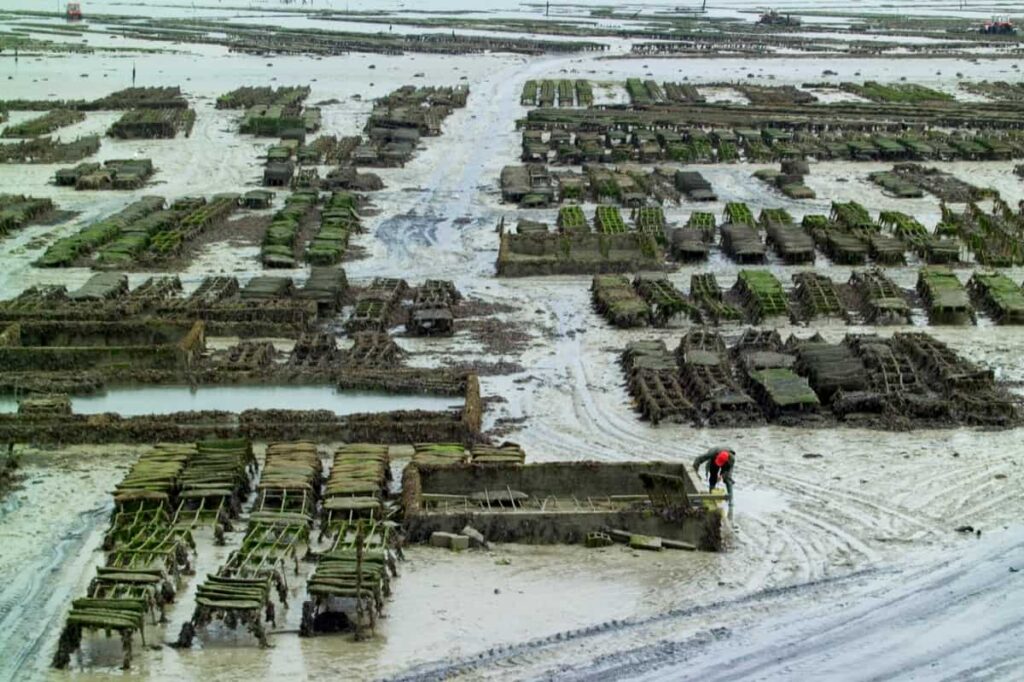
Conclusion
Oyster farming in the Philippines intertwines tradition and innovation, driven by meticulous techniques and environmental consciousness. It sustains livelihoods while safeguarding marine ecosystems, embodying a harmonious coexistence of nature and industry.
- Sheep Farming Business Plan for Beginners
- Aquaponic Farming at Home: A Step-By-Step Guide
- Profitable Village Farming Business Ideas in 2024
- High-Yield Aquaculture: Fast-Growing Fish for Farming
- Effective Fish Pond Construction Techniques for Beginners
- Irrigation and Water Management in Pineapple Farming
- Blossom to Harvest: Mastering Flowering and Pollination in Papaya Farming
- Pig Fattening Essentials: From Selection to Sale for Beginners
- Raising Wagyu Cattle: A Complete Guide for Premium Beef Production
- Soil Types and Their Water Holding Capacity
- Optimizing Irrigation Schedules for Coconut Groves for Enhanced Yield
- Espresso Your Garden: Coffee Grounds for Healthier Acid-Loving Plants
- The Best Soil Mix for Snake Plants: How to Mix Your Own Snake Plant Soil
- Green Thumb Success: Expert Tips for Cultivating Greenhouse Beans All Year Round
- Bloom All Year Round: The Ultimate Guide to Indoor Hyacinth Care
- Eco-Friendly Gardening: How to Make Liquid Fertilizer from Kitchen Waste
- Ultimate Guide to Grow Anise in Pots: Explore Seed Propagation to Harvesting
- Guide to Raising Chester White Pigs: Discover Breed Facts to Growth Management
- Mastering the Elegance: The Ultimate Guide to Weeping Cherry Tree Care, Planting, and Maintenance
- Ultimate Guide to Planting Garlic in Grow Bags: Growing Strategies for Beginners
- How to Fix Spider Plant Leaf-Related Problems: Natural and Organic Remedies
- 10 Reasons Why Your Tulsi Plant is Shedding Leaves: Home Remedies and Solutions
- Optimizing Growth and Yield: The Advantages of Palm Bunch Ash Fertilizer
- Utilizing Neem Oil Extract as a Natural Pesticide for Hydrangea
- From Soil to Harvest: Various Ways in Which Farmers Can Use AI Tools
- Steps to Encourage and Induce Citrus Flowers: A Comprehensive Guide
- How to Fix Snake Plant Leaf-Related Issues: Natural and Organic Remedies
- Transform Your Garden into a Fragrant Oasis with Raat Ki Rani (Night Blooming Jasmine)
- Discover the Ideal Chicken Breeds for Philippine Farms
- How to Create a Poultry Egg Farm Business Plan for Profits
- Grow Lemon Cucumbers Like a Pro: Insider Techniques for Bountiful Yields
- Ultimate Guide to Caring for Your Pink Princess Philodendron: Tips for Thriving Variegation
- Areca Nut Profit Per Acre: Calculating Yield and Cost of Cultivation
- How Kaveri Chicken is Becoming a More Profitable Breed in Indian Backyards
- Transform Your Barn: 9 Steps to Convert a Horse Stall into a Chicken Coop
- Exploring Suffolk Sheep Disadvantages with Limitations and Challenges
